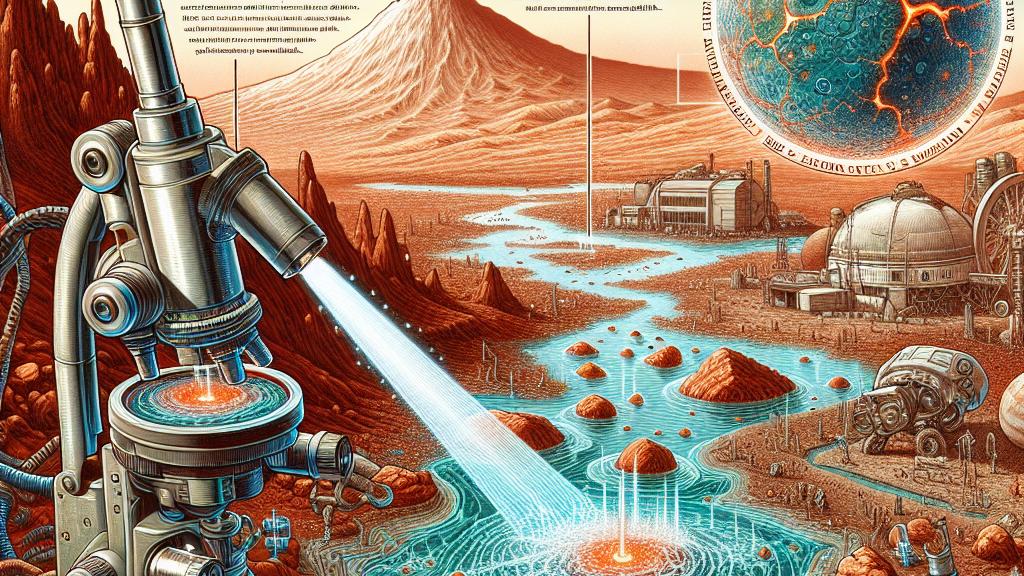Ancient Martian Water Activity Discovered
Overview
- Stunning new evidence reveals that hot water once flowed on Mars, hinting at potential life.
- Analysis of a 4.45-billion-year-old zircon from the Black Beauty meteorite illuminates Mars' past.
- These findings radically challenge our understanding of Martian habitability during its early history.

A Glimpse into Mars' Watery Past
Picture Mars not as the desolate, barren landscape we see today, but as a dynamic planet where hot water flowed freely. Recent findings from Curtin University have presented compelling evidence indicating that ancient hot water activity occurred on Mars, possibly creating conditions favorable for life. The investigation centered on a tiny zircon grain pulled from the renowned Martian meteorite, Black Beauty, which astonishingly originated 4.45 billion years ago. Researchers employed cutting-edge nano-scale imaging techniques, unveiling geochemical marks—like water's delicate fingerprints—that hint at a past rich with water influence. These revelations shine a light on the potential for hydrothermal systems on early Mars, akin to the thriving ecosystems we find near hydrothermal vents on Earth.
Decoding Black Beauty's Secrets
The zircon grain found in Black Beauty isn't just a relic; it acts as a time capsule revealing Martian history. Researchers identified key elements—such as iron, aluminum, yttrium, and sodium—locked within the zircon, each serving as a clue pointing towards the existence of hot, water-rich environments during a pivotal phase of Martian geology. Dr. Aaron Cavosie, a key figure in this study, emphasized that hydrothermal systems on Earth fostered life, and by analog, Mars could have similarly hosted warm water environments that may have been habitable. Even amidst violent meteorite impacts that reshaped the Martian surface, the enduring signs of water suggest a resilient ecosystem well into the Pre-Noachian period, challenging the notion that Mars has always been inhospitable.
Reimagining Mars: The Quest for Ancient Life
The implications of these findings are profound, urging us to rethink Mars' history and its capacity for sustaining life. While today's Martian surface is stark and lifeless, evidence suggests it may have once teemed with bodies of water—lakes, rivers, possibly even oceans. Historical climate models suggest that conditions billions of years ago could closely resemble those on early Earth, prompting excitement about the length of this habitable window. Upcoming Mars missions are set to enhance our understanding by returning samples that could reveal even more about the planet’s ancient climate. This very exploration fuels curiosity and wonder about life beyond our planet, inspiring scientists and enthusiasts alike. Every new discovery about Mars not only enriches our understanding of the Red Planet but also heightens the anticipation of what future findings may reveal about the possibilities of life beyond Earth.

Loading...